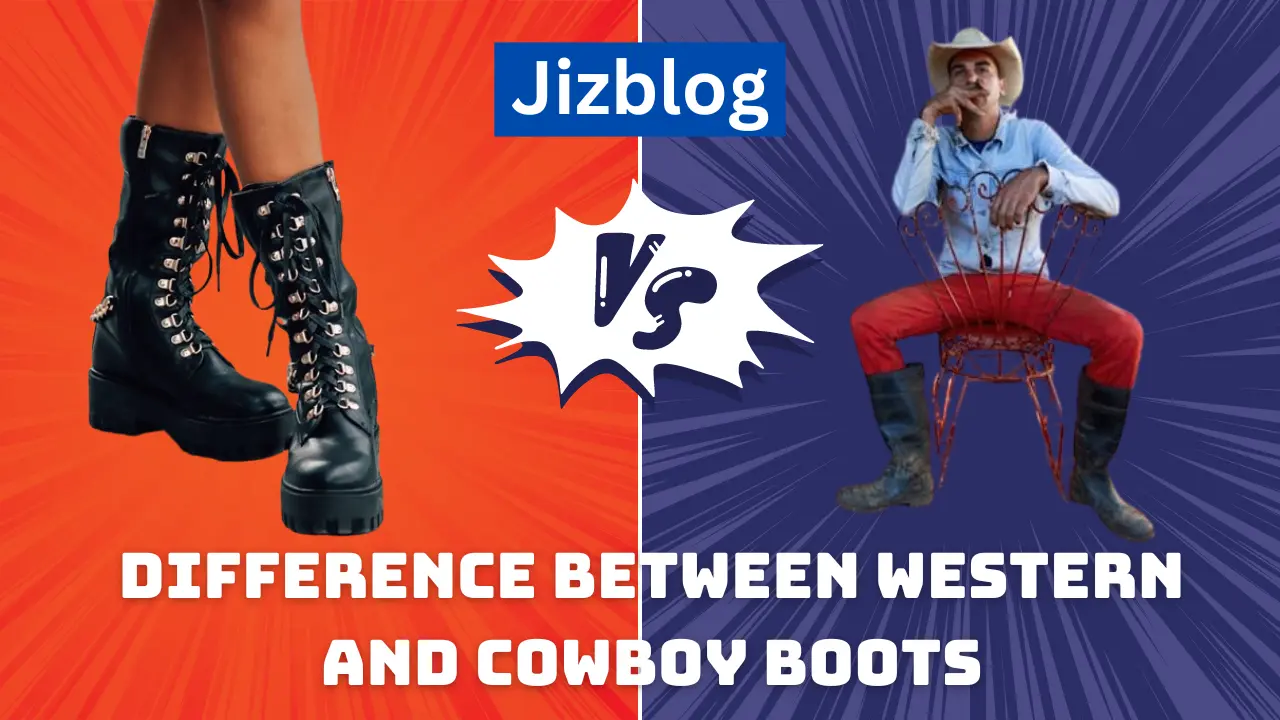The Distinct Styles of Western and Cowboy Boots
Western boots and cowboy boots may seem alike at first glance. But they actually have notable differences in design and purpose. Understanding what sets these iconic styles apart helps you choose the right boots for your needs. In this comprehensive guide, we will discuss what is the difference between western and cowboy boots in detail:
Tracing the Origins: Cowboy Boots
Cowboy boots trace their roots back to the late 1800s. They emerged to meet the practical demands of ranch work in the American West. Their signature tall shafts protected cowboy’s legs from brush, debris, and snake bites. The boots’ pointed toes made it easy to slide the foot into stirrups for horseback riding. High heels provided secure footing in the saddle. These purposeful design elements addressed the needs of hardworking cowboys and cowgirls taming the Wild West.
The Diverse Heritage of Western Boots
In contrast, western boots have a more varied background. They drew inspiration from cultural traditions like the vaquero style of Northern Mexico and the American Southwest. These boots typically featured shorter shafts and rounded or squared-off toes. The designs suited everyday wear rather than specialized work. As the American West evolved, western boots became a symbol of the region’s rich heritage and history. Both working cowboys and urban city-dwellers embraced the western boot’s versatile style.
Distinguishing Design Features
One of the most obvious differences is the contrasting shaft heights. Cowboy boots stand out with their taller shafts that typically reach mid-calf or higher. This extended coverage protects the lower legs while riding. Western boot shafts, however, stop just above the ankle for a more casual and versatile look.
Another clear distinction lies in the toe shape. Cowboy boots feature the iconic pointed-toe box. This design originated to facilitate easy foot entry into riding stirrups. In contrast, western boots often showcase rounded or squared-off toe boxes in a diverse range of styles.
The heel heights also tend to differ between these two boot categories. Cowboy boots traditionally boast higher heels, ranging from 1.5 to 2 inches tall. These elevated heels provided stability and leverage for secure footing in the saddle during horseback riding. On the other hand, western boots generally have lower heels under 1.5 inches, making them better suited for extended everyday wear and activities beyond just riding.
| Feature | Cowboy Boots | Western Boots |
|---|---|---|
| Shaft Height | Tall shafts, typically mid-calf or higher | Shorter shafts, stopping above the ankle |
| Toe Shape | Pointed toes for easy entry into stirrups | Rounded or square toe boxes in diverse styles |
| Heel Height | Higher heels, 1.5 – 2 inches tall for stability in the saddle | Lower heels, under 1.5 inches for everyday wear |
| Primary Function | Optimized for horseback riding, ranch work, rugged outdoor activities | Versatile for casual everyday wear, workplace, nights out |
| Leather Types | Robust full-grain cowhide, exotic leathers like ostrich or caiman | Quality leathers plus suede, embroidery, decorative elements |
| Width Options | Standard “D” medium width, plus wider “EE” and “EEE” widths | Standard “D” medium width, plus wider “EE” and “EEE” widths |
Functional Considerations
The taller shafts and pointed toes of cowboy boots make them well-suited for horseback riding and navigating rugged, outdoor terrain. The extended shaft guards the lower legs from brush, debris, and even snake strikes when riding trails. The pointed-toe shape helps the foot slide smoothly into riding stirrups. These purposeful features optimize cowboy boots for the demands of ranch work and rural environments.
With their shorter shafts and diverse toe shape options, western boots offer greater versatility for everyday wear across different settings. You can dress them up with slacks for the office or workplace. You can also pair them with jeans for a night out or casual weekend errands. The shorter shaft provides better mobility, while rounded or squared toes accommodate different style preferences. Western boots strike a balance between function and fashion.

Achieving the Proper Fit
When shopping for either style, finding the right fit is crucial for all-day comfort. Both cowboy boots and western boots come in a range of widths to accommodate various foot shapes and sizes. The standard “D” width represents a medium, regular fit. But wider options like “EE” and “EEE” provide a roomier fit for those needing extra width across the forefoot.
It’s important to note that sizing can sometimes vary between brands and even different boot styles from the same manufacturer. To ensure the best possible fit, nothing beats trying on boots in person whenever possible. This allows you to walk around and assess comfort. If shopping online, be sure to carefully consult sizing guides, customer reviews, and size charts from the brand or retailer.
Leathers and Materials
Cowboy boots tend to prioritize highly durable, robust leathers that can withstand harsh outdoor conditions. Full-grain cowhide and exotic leathers like ostrich or caiman are common choices. These heavy-duty materials offer excellent resistance to daily wear, scrapes, water, and the elements working cowboys may encounter.
While still constructed with quality leather, western boots incorporate a wider range of materials and finishes. Suede, decorative stitching, embroidery, and embellishments like studs or fringe allow for greater personalization and creative expression. The diversity of Western boot materials caters to varying individual styles and preferences.
Conclusion – Embracing Your Personal Style
At the end of the day, choosing between cowboy boots and western boots comes down to your intended uses and personal style aesthetic. For horseback riding, ranch work, outdoor activities, or fully embracing the authentic cowboy lifestyle, cowboy boots deliver unbeatable performance and iconic flair. Their taller shafts pointed toes, and riding heels evolved for these rugged purposes.
If you seek a versatile, fashion-forward boot that can seamlessly transition from the workplace to date nights to weekend wear, western boots could be the perfect stylish companion. Their shorter shafts, varied toe shapes, lower heels, and expressive material options allow you to create distinct personal looks while still capturing some Western flair.
Whichever style you ultimately choose, both cowboy boots and western boots connect you to the free-spirited heritage and pioneering essence of the American West. They serve as functional and fashionable emblems of this country’s trailblazing past. By understanding the distinct nuances between these two iconic styles, you can select boots aligned with your needs and individual journey.
FAQ’s
- What is the main difference in shaft height? Cowboy boots feature taller shafts reaching mid-calf or higher, while western boots have shorter shafts stopping above the ankle.
- How do the toe shapes differ? Cowboy boots are renowned for their iconic pointed toes, whereas western boots often showcase rounded or square-toe boxes.
- Which style has higher heels designed for horseback riding? Cowboy boots traditionally have higher heels ranging from 1.5 to 2 inches tall to provide stability and leverage in the saddle.
- Are western or cowboy boots better for everyday casual wear? Western boots, with their shorter shafts and lower heels, offer greater versatility and are generally more suited for everyday casual wear.
- What leathers and materials are used? Cowboy boots prioritize highly durable leathers like full-grain cowhide, while western boots incorporate a wider range of suede, embroidery, and decorative elements.

